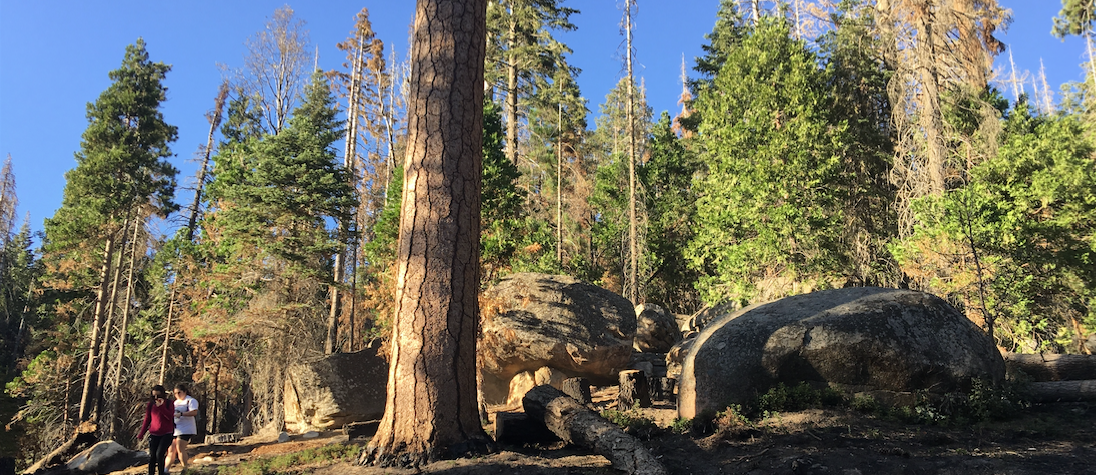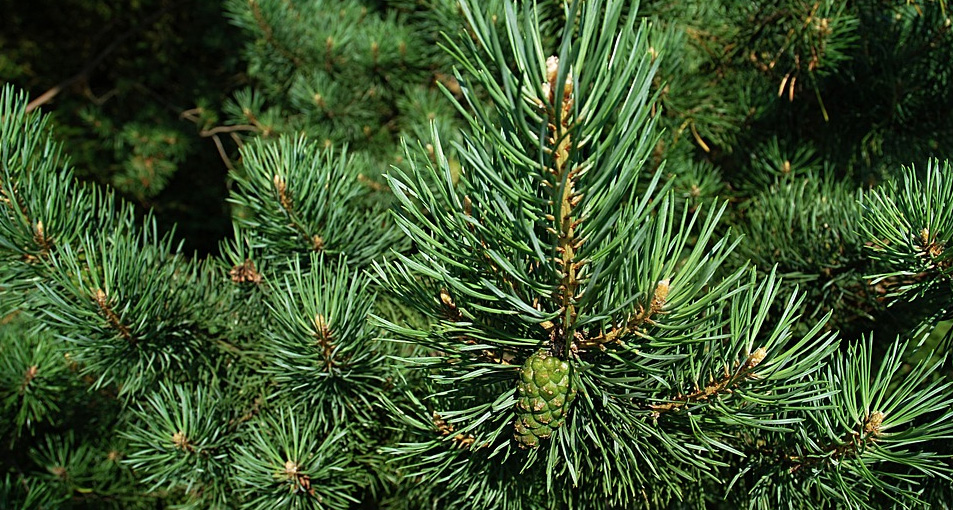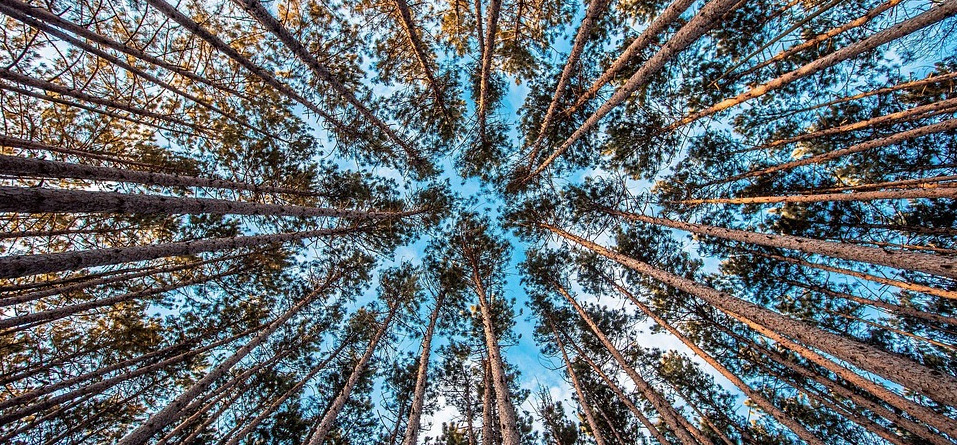Evergreen Content: The Content Forest Audit
Last updated 10/25/21 ✧ First posted 03/20/17
~6 minutes to read.
Contents
Evergreen content makes even more sense than you think.
It’s a perfect metaphor for always-useful content. But do you know that it can imply so much more, and even give you a new way to organize the pages on your website?

The Obvious Ways “Evergreen Content” Makes Sense
Let’s get these out of the way first.
One reason why the metaphor is so useful is that you don’t have to be a dendrologist to understand what it means.
There are plenty of evergreen trees out there and the world is better with more of them – much like your website should strive to have as much evergreen content as possible.
Evergreen trees are constantly being updated and rejuvenated. They shed their leaves (or pine needles) and grow new ones constantly. In the same way, you can’t let your evergreen content stay static – you must continually refresh it to keep it at the top.
And just like those leaves keep photosynthesizing vital oxygen, the content of those pages delivers vital traffic and revenue to your website.
Evergreen content can take many forms beyond just the standard blog posts and guides you might think of – it can be calculators, modules, shopping pages, galleries, and more. In the same way, evergreen trees aren’t only the pine trees you might picture, but also tropical rainforest trees and palm trees, too.
But we can take this metaphor even further.

Beyond Evergreen Content
Evergreen vs Deciduous
What’s the opposite of an evergreen tree?
A deciduous tree.
Deciduous trees are trees that grow leaves in the spring and lose them in the fall. Many trees you know and love are probably deciduous.
So with our logic, deciduous content is seasonal content.
Consider a toy company website. The “Best Toys for Toddlers” page would be evergreen, because people constantly need to buy toys for tots.
However, the “Best Toys for Christmas Gifts” page would be deciduous, because it’s seasonal. It’s dead in the summer, but one of the top drivers of revenue in the winter.
In both cases, the actual content of these pages (the toys) would need to be refreshed, either continually (evergreen) or for each season (deciduous). In this way, page content is leaves.
What about content that’s only useful for a short time, then never again?
Pine Needle Posts
Evergreen trees support more evergreen trees. You see, they grow best when there’s a lot of nitrogen in the soil, and their pine needles contain nitrogen.
So when they shed these needles onto the ground, that nitrogen gets absorbed and spread into the earth below. This creates an environment ready for more evergreen trees.
In the same way, a pine needle post is something that your business needs for little things here or there, that are relevant when you post them but then permanently lose that relevancy.
For example:
- Where to Find Me at Dendrology Con 2012
- Financial Forecasts for 2014 Q2
- Giveaway: Free Coupons (Limited Quanity)
I think you can see the difference. These are things that provide obvious benefits to users, but not for years to come.
Sure, you might have someone looking into one of them for historical purposes (and thus you usually should not delete these), but your 2014 financial forecasts will not be a main traffic driver in 2027.
That should cover all of the types of posts and pages you may have on your website.
Now let’s make this actionable.
The Content Forest Audit: Your Website as a Forest
It’s time to get dendrological with our SEO and perform a Content Forest Audit.
Give your site a crawl and look through your URLs in Excel.
In a new column, label each as Evergreen, Deciduous, or Pine Needle.
(Evergreen gets a nice healthy forest green, deciduous gets a sort of autumn orange like changing leaves, and pine needle gets a duller brown like decomposing plant matter. Many clients work best with visual cues, so even including little tree icons can really help distinguish you here.)

Deciduous Content
Sorting by this column you’ll see Deciduous pages first, alphabetically speaking.
These are the pages that will be the most erratic on your content calendar, so you should pay special attention to when you start updating them.
Depending on market and industry, you may need to update them weeks or months before the season starts.
You should define the length of each season as it pertains to SEO. Then set up annually recurring calendar reminders for the beginning of those seasons and also a number of weeks or months out, whatever you determined.
If they’re pages you move on and off the navigation menu, you’ll want to note those dates too – both for reference and because those dates may be important markers on your SEO reports later.
Evergreen Content
After your deciduous content, your evergreen content will follow alphabetically on that spreadsheet.
This fits into our logical flow since evergreen posts need attention in different kinds of ways.
You should set up times to refresh (or just review) these pages at regular intervals. This is independent of seasonality and can be repeated at these intervals in perpetuity.
Whether you do something like a different post a week, or schedule a review of all evergreen content all at once, is up to you and depends on your workflow, the amount of content, and personal preference.
Many people forget to regularly update evergreen content (myself included) but if you’re not constantly trying to innovate and disrupt even your best efforts – or especially your best efforts – then eventually a competitor will come along and do it better.

Pine Needle Content
Pine needle posts are generally your last priority, but this doesn’t mean you should ignore them completely.
Just like that nitrogen-rich plant matter, they provide valuable support for your main traffic-driving pages.
The first step here is going through these posts and ensuring that none need to be deleted. I recommend keeping as many as you can up, even if they’re not relevant, but this depends a lot on your website and tone.
The next step (closely aligned with the first) is ensuring that none of these pages are overstepping their bounds by creating duplicate content issues.
I can’t tell you how many times I’ve seen this happen in clients. They’ll have, say, some main “Christmas” page, but maybe five years previous some employee who didn’t understand SEO made a random “Holiday Stocking Stuffer 2013 Gifts” post that Google gets hung up on.
That’s a great opportunity to take that content, see what it ranks for, and incorporate it into the main page (while canonicaling or 301ing that pine needle post).
After you’re sure there’s no duplicate content, the final step of managing your fallen leaves is to include links to your evergreen and deciduous content in them.
You do this for users – the random people who might stumble on these posts that you want to direct to your prime stuff instead.
You also do this for search robots – the internal links are a way of showing that these pages just support the more important content.
Depending on your posting frequency you may choose to review your pine needle posts on a regular basis, but it’s not something you should have to worry about too much.

Conclusion
I think an SEO Forest Audit is a helpful way to look at a website.
I also just like trees a lot.
Because I don’t want your education to be lacking, I should mention that there are some trees out there that are semi-deciduous, so crossovers do exist. Also, did you know that evergreen and coniferous don’t mean the same thing? Most conifers (cone-bearing plants) are evergreens, but not all (see the Larch tree). Isn’t that neat?
Thanks for reading.
✧ ✧ ✧
Written by Ethan J. Hulbert.

